Musings
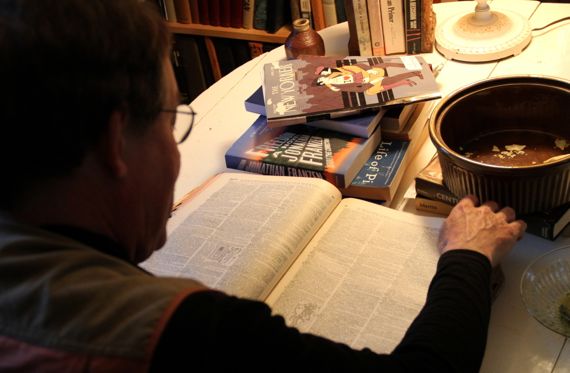
…in which our visitor looks up “gimlet” in the old Funk & Wagnalls.
And finds out that over a century ago, when this edition of F&W was published, it was a common hand tool rather like a T-shaped cork puller, but used for boring—from an old word for drill.
And not a gin/vodka-and-lime-juice drink.
Posted at 10:22 PM |
1 Comment »
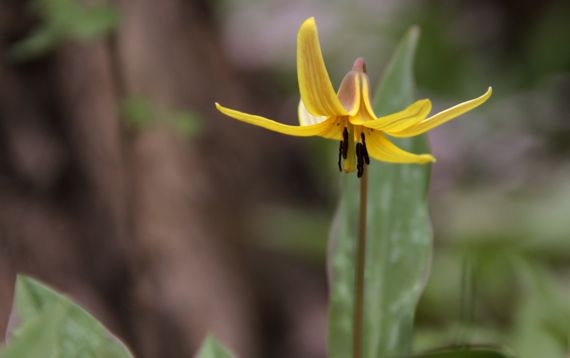
More from David George Haskell’s The Forest Unseen: A Year’s Watch in Nature (2012; pg. 228)—I’ve gotten into December, so I’m almost finished:
The partnership between fungi and plants…is an old marriage, dating to the plants’ first hesitant steps onto land. The earliest terrestrial plants were sprawling strands that had no roots, nor any stems or true leaves. They did, however, have mycorrhizal fungi penetrating their cells, helping to ease the plants into their new world. Evidence of this partnership is etched into fine-grained fossils of the plant pioneers. These fossils have rewritten the history of plants. The roots that we thought were one of the earliest and most fundamental parts of the land plant body turn out to be an evolutionary afterthought. Fungi were the plants’ first subterranean foragers; roots may have developed to seek out and embrace fungi, not to find and absorb nutrients directly from the soil.
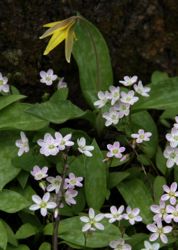
Ker-pow! (To the admittedly now ancient biology books I studied in HS.)
And, the trout lily is from yesterday’s excursion to the wildlife refuge. We found it in flowering expanses of valley floor amidst large-flowered trilliums and a smaller flower I keep thinking is a kind of anemone*, but can’t find in my wildflower book. Or don’t recognize the description without a picture that seems identical to me. Here’s my picture, of the little guys with a larger, nodding, um, maybe some kind of bellwort? (Clearly, I’m better at finding than identifying….)
We found the refuge busy with birdlife, too. We saw both trumpeter (I think) swans and ospreys sitting on nests, and many other birds not sitting on nests.
The Guru noted that there are creatures called anemone from both land and sea, and why? I said, must be related to the Greek? origin word. And my dictionary says (ignoring the sea critter): “from Latin, said to be from Greek anemōnē ‘windflower,’ literally ‘daughter of the wind,’ from anemos ‘wind,’ thought to be so named because the flowers open only when the wind blows.” And why wait for the wind (if that is indeed true)? Haskell would say because then its pollen can be distributed farther afield than it would be if the flower just opened and dropped its pollen near the mother-plant’s base. So, the sea version is also bending with the waves and tide, as if flexing in the wind? Ah, digressions.
Posted at 2:02 PM |
4 Comments »
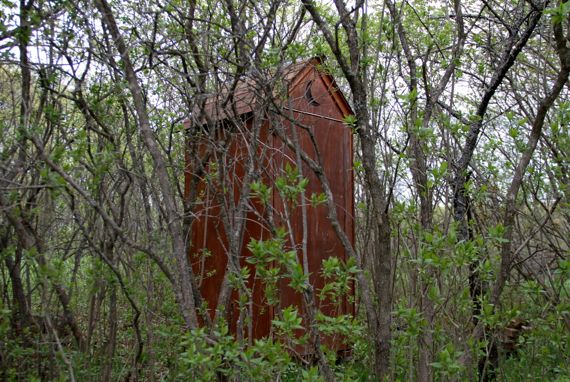
I’ve been reading about a huge range of life cycles and species relationships in David George Haskell’s wonderful The Forest Unseen: A Year’s Watch in Nature (2012). More than I’ve ever realized before, I now understand how animals can be viewed as the way plants and micro-beasts get things done that they couldn’t do alone. And all sorts of patterns are incorporated into a complex whole. And how that whole might be is likely to be misunderstood if you view it from the perspective of the mammalian world. Consider this (p. 134):
Without exception, reproduction in animals and plants involves sex cells that come in two distinct forms: large and well-provisioned cells—eggs—or small and mobile cells, sperm. But fungi show us that this duality is not the only possible arrangement. Fungal mating types can number in the thousands.
Yikes.
I dealt with another wee system today. Yesterday afternoon I made a small fire in the wood stove, just to get the house temp higher in the 60s, and, despite having good dry fuel, it just wouldn’t draw. Highly probable problems: blockage in the chimney (hope not), poor incoming air flow. Decided to explore the latter today, hoping for a solution there. Indeed.
Second bit of evidence: ash bucket in outhouse, aka the little house in the lilacs, is almost empty.
Yup. Emptied ash from the stove this morning, filling the bucket and opening the airflow through the bottom of the stove. All systems ready for the next fire and next, um, personal outdoor meditation in the wee special activity area structure.
NOTE: special thanks to Soliel the alpaca for commenting yesterday on “her” post…. Read more about Soliel and her barnyard buddies here.
Posted at 4:51 PM |
1 Comment »
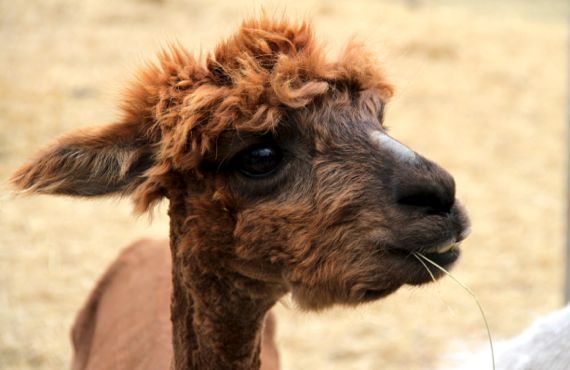
I’m being casual even though my hair was removed last week, and I don’t like my bony body image. Notice how cool I am with this gras, though.
Scary thing: as I was composing this, maybe three and a half hours after our farm visit, I found a tick running up my neck. Running is better than stopped. Now headed for the shower & a detailed TICK CHECK….
Posted at 7:49 PM |
3 Comments »

Car is now bug-free, and once again an unnaturally bright white.
Posted at 10:22 PM |
1 Comment »
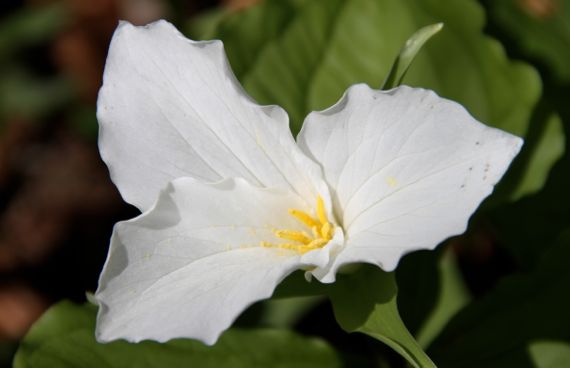
Aha! I found stretches of woods where the forest floor is carpeted in blooming trilliums*.
* Or maybe it should be trillia? Or perhaps a trillia is an obscure Medieval northern European musical instrument, typically made of wood?
Posted at 10:22 PM |
Comments Off on Trillium/trillia
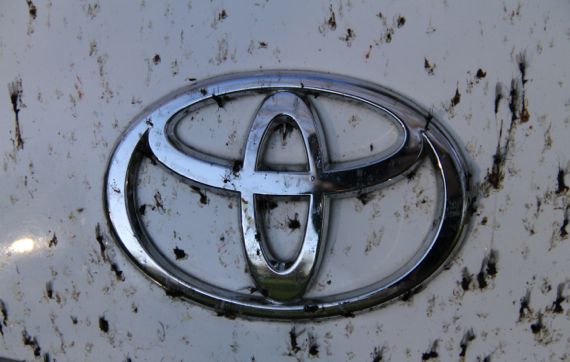
During our trek today, we drove under what seemed like horizontal columns of insects, small flies or gnats or something soft-bodied. They seemed to favor the space above the road/blacktop, but, fortunately, most of the time above our vehicle, too. Except for some spots. Our Prius now has new organic matter decorating it.
Posted at 10:22 PM |
1 Comment »

With our low-clearance, highly ergonomic Prius, we creep where other vehicles zoom, but every vehicle we saw navigate this crossing crept. For good reason. Three sets of tracks on two levels, and nothing smooth about any of the transitions…still, the clear sky, the green of the vegetation—loverly.
Posted at 10:38 PM |
Comments Off on Contrasts and transitions
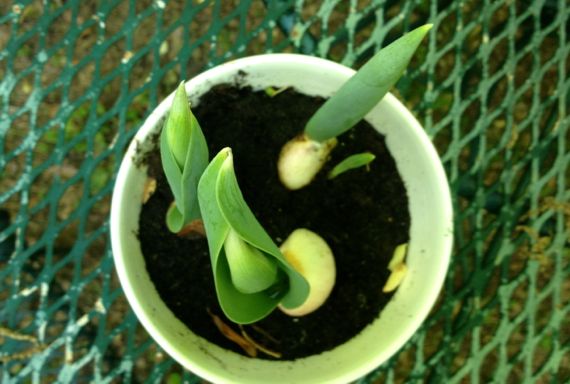
The world’s slowest tulips continue at their own pace. The leaf unrolling began about ten days ago. I can’t wait for what’s next!
Posted at 10:22 PM |
Comments Off on Tulip watch
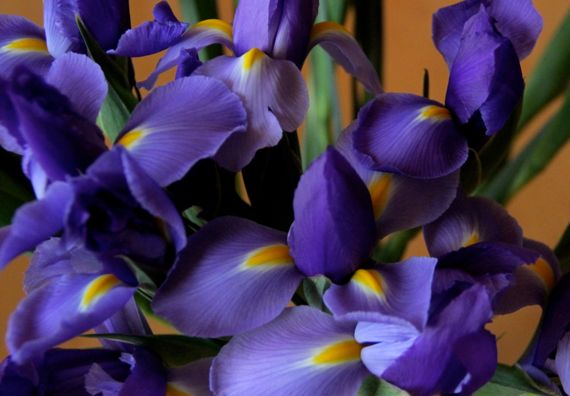
Official national brunch day.
Walked to the library with the Guru. First stretch with the knee I’ve been babying. Seemed okay! Yippee.
Posted at 8:35 PM |
1 Comment »










